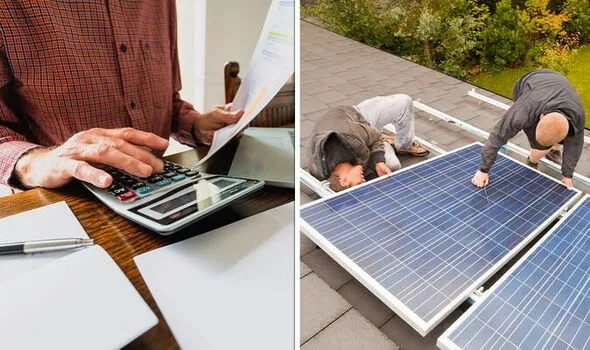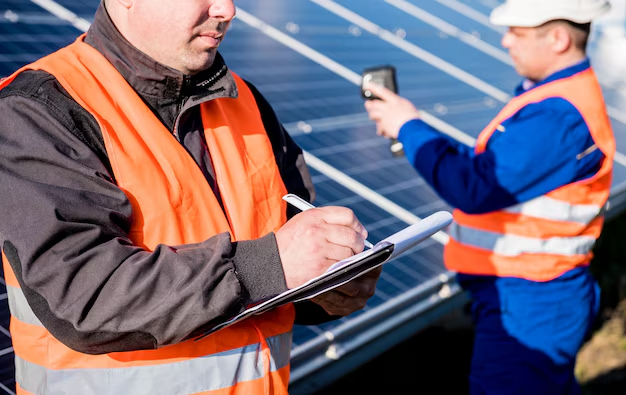Soaring energy costs and a growing population are driving more homeowners to look at rooftop solar systems. This type of system is a great investment that pays off in the long run. But there are some things to consider before making the decision. Read on to learn about the costs, returns, and Government incentives.
Investing in solar panels
Investing in rooftop solar panels is a great way to offset soaring energy costs. The federal government and some states offer tax credits for installing solar panels. The federal Solar Investment Tax Credit can offset up to 26% of installation costs. This credit will reduce to 22% in 2023, but many state governments still offer some kind of tax break. Additionally, many states offer net metering, which allows energy companies to buy excess energy. Solar installation is not inexpensive and maintenance costs will likely be incurred over the lifetime of the solar panels.
The cost of installing a rooftop solar system can vary depending on your state, local labor costs, and your home’s energy use. You can also get a better deal if you pay cash. However, if you cannot afford the upfront costs, you can opt for a loan or lease. You’ll want to shop around to find the best solar panel package.
The rise in solar costs could delay the deployment of half of the world’s solar capacity by 2022. This is largely due to raw material price increases and supply chain constraints. According to an IRENA report, the average cost of solar electricity in 2022 will be $0.048/kWh. China has the lowest LCOE for solar power at
$0.034/kWh. Other countries with lower solar costs include Australia, which saw a 17% year-on-year drop in costs from last year.
With the increasing cost of energy, the payback period for rooftop solar panels will increase. A 4kW system could pay for itself in around 7 years, and a 5kW system will pay for itself in less than 10 years. However, the payback period will vary depending on the household’s energy usage.
Return on investment
There are many factors to consider in order to get a good solar ROI, including state policies and electricity prices. You should also get multiple quotes to ensure you’re getting the best possible price. If you’re not sure how to calculate your ROI, you can consult a spreadsheet program to help you. For example, consider the total system cost after upfront incentives, and then subtract the savings from electricity costs for the first year. The first-year net investment, including the savings, should be negative.
One of the most important factors is the federal tax credit for installing solar. In most states, this credit is worth up to 26% of the cost of your solar panels. Additionally, individual state and local incentive programs may offer additional discounts and rebates for solar. Be sure to research each program to see what you can qualify for.
In addition to lower costs, SEITs are also expected to increase the availability of capital. The lower costs of debt are expected to boost rooftop solar adoption. And since solar investment trusts fall under SEBI regulations, they are regulated. They must disclose certain information about their projects. Having a transparent, predictable business model also helps the investor.
The payback period refers to the period of time before solar panels will pay for themselves. This timeframe varies depending on the efficiency of the solar panels and the amount of electricity that was used prior to installing the solar panels.
However, Easy Solar uses the best solar panels available, which allows them to offer the lowest payback period for their customers. The payback period is only about one year, and homeowners can expect to get a 20% ROI after installing their solar panels.
In addition to the cost of solar panels, batteries are often the most expensive part of the system. A typical battery-based system will have to be replaced every 10 years or so. The battery is an additional cost to consider in your payback calculations. The cost of solar batteries can add up quickly, and you may want to buy a lithium battery instead of a lead-acid battery.
Cost of system
The federal solar tax credit is one of the most important incentives for installing a solar power system in Australia. It allows you to deduct up to 26 percent of the cost of solar panels. There is no cap on the value of the tax credit, so you can take as much as $7,202 off the cost of a 10 kW solar power system. This will reduce the total cost of the system to $20,498.
According to a report by GlobalData, the cost of a rooftop solar system in 2022 will increase moderately. The increase is primarily due to shortages of solar panels and components. As solar panels and other solar components become cheaper, the cost of rooftop solar systems will decrease. However, due to shortages of materials and labor, prices may increase by a significant amount.
The federal tax credit remains in effect until 2022. The cost of installing a solar panel system will vary, depending on where you live in Australia. Typically, the cost of a solar panel system will be between $12,000 and $30,000. The cost of a solar panel installation depends on the size of the system, geographical location, and energy usage.
Today, a five-kW residential solar panel system costs about $3 to $5 per watt. That means that the average 5 kW system will cost around $15,000 to $25,000, including incentives and tax credits. The average system is expected to last for 25 years.
However, this will increase significantly if a solar battery storage system is used.
The cost of a solar panel system varies widely, from $5,000 for a small home project to more than $25,000 for a large solar panel system. The average cost of solar panels varies from one manufacturer to another. It may cost as little as $1 per watt for monocrystalline solar panels.
Government incentives
The Government is planning to cut back on its tax incentives for rooftop solar in 2022. The incentives offered by the federal government are designed to make a solar installation more affordable. These incentives are available in a number of forms, including a 30% tax credit on the installed cost. A tax credit is one of the best ways to get started on solar energy.
The tax credits are available for both residential and commercial solar energy systems. The federal investment tax credit is available until December 31, 2022.
The credit is applied to the cost of installing a residential solar energy system, and it is also available for energy storage. This means that a solar array may be retrofitted with a battery to provide energy storage.
Federal and state tax credits are available in many states. You can search for your state’s solar incentives in the Database of State Incentives for Renewable Energy and Efficiency. Some states have tax credits for solar that is similar to the federal ITC. However, these state tax credits do not reduce federal tax credits, so you have to calculate the total cost of your solar system when looking for a tax credit.
In Australia, the state has a large program that offers upfront rebates for solar energy systems installed on residential roofs. The program is called the Small-scale Renewable Energy Scheme and is administered and run by the government. Under this scheme, customers who install an eligible small-scale renewable energy system, such as rooftop solar panel systems under 100-kilowatt hours (kW), can earn what is known as a small-scale energy certificate (STCs).
The new incentives will help homeowners make their solar energy upgrades more affordable. The current tax break for energy efficiency is set to expire in 2022, but the new one is set to last for a year. If your energy consumption cuts by 20%, you can get a rebate of $2,000 or more. If your energy savings is more than 35%, you can get a rebate of up to $4,000. The rebate is doubled for lower-income households that earn less than the median income in their area.
Location of system
Solar energy’s value in the Australian market will rise from $5.5 billion in 2017 to $7.5 billion in 2021 and $8.2 billion in 2022. New South Wales, Victoria, and Queensland will generate more than half (56%) of Australia’s total installed solar capacity by 2021 and 2022, with solar energy contributing to an additional $1.3 billion by 2021 and $1.4 billion in 2022 for each state or territory.
The new market projection reflects a substantial increase in the cost of installing rooftop solar panels on existing properties that are located on rooftops rather than on ground-floor commercial premises such as factories, offices, shops, and offices of retail businesses, hotels, or offices of farming businesses or areas where agricultural activities are conducted such as farms and industrial estates (although new residential installations may also be possible). The projected cost increases are expected to be driven by rising interest rates and falling commodity prices (particularly coal) over the next few years.
Despite the challenges, the residential solar market is growing, and installers are converting record sales volumes into completed installations. However, the cost of residential rooftop solar is predicted to rise moderately in 2022, with an increase of about USD1.6/W, according to GlobalData.







